Dropshipping fitness products is an increasingly popular and lucrative venture, especially with the rise of home workouts and growing health consciousness.
By choosing the right products and suppliers, you can tap into a vast market and boost your online business effortlessly.
The fitness dropshipping industry offers a wide array of products, from exercise equipment to fitness apparel, catering to diverse customer needs.
The purpose of this article is to provide you with a comprehensive list of the best fitness products to sell online through dropshipping. We’ll cover essential considerations for starting a fitness dropshipping business, helping you make informed decisions.
Why Dropship Fitness Products?
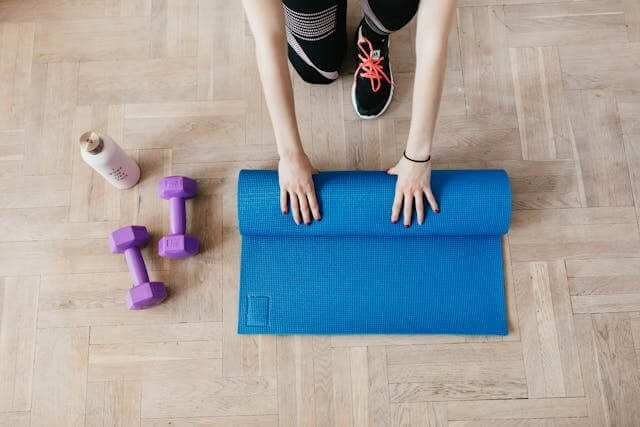
Dropshipping fitness gear is one of the most promising niches in 2025. Here’s why it makes sense:
1. A Booming Market
- The global dropshipping industry was valued at $354.8 billion in 2024 and is projected to grow at 26.1% CAGR through 2032.
- The home fitness equipment market alone is set to rise from $12.9 billion in 2025 to $19.8 billion by 2032 (~6.3% CAGR).
- Rising interest in at-home and smart fitness gear continues to open new product opportunities.
2. Low Barriers, High Scalability
- No need to hold inventory or manage warehouses, lower upfront risk.
- Many fitness accessories (resistance bands, mats, rollers) are lightweight and easy to ship, keeping logistics simple.
- Sellers can quickly test and scale new products without large investments.
3. Recurring Demand & Cross-Selling Potential
- Fitness gear often requires replacements or multiple purchases (e.g., mats, ropes, bands).
- Products pair naturally, boosting average order value (AOV), like apparel + gear, or smartwatch + smart scale bundles.
4. Strong Consumer Trends
- The global wellness economy is projected to reach $9 trillion by 2028.
- Health and fitness are no longer fads, consumers are embedding wellness into their daily routines.
- This shift supports long-term demand for both durable gear and smart accessories.
5. Room for Differentiation
- Many sub-niches remain under-served: rehab, senior fitness, functional training, and recovery gear.
- With the right branding, influencer partnerships, and customer education, new sellers can stand out even in competitive spaces.
A List of the Best Fitness Products to Sell Online
The fitness market continues to expand with home workouts, wearable tech, and wellness trends on the rise. Below, we break down key products gaining traction in 2025, covering their usage, demand, earning potential, and important caveats.
1. Resistance Bands
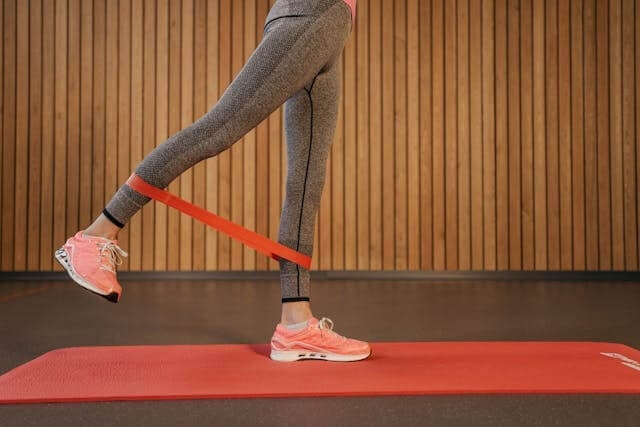
Resistance bands are portable elastic straps used for strength training, rehabilitation, and flexibility. They allow users to perform resistance exercises anywhere, at home, in the gym, or while traveling, by providing varying levels of tension.
These bands are popular for glute, leg, and arm exercises, and are also used in physical therapy to rebuild strength. Sets of 5-7 bands of different strengths are common and can be bundled or sold individually.
Because they are compact and inexpensive, they appeal to beginners, advanced athletes, and rehab patients alike.
- Why sell it: Very high demand for home and portable workouts; inexpensive, lightweight, and easy to ship; appeals to a wide range of fitness levels; often sold in multi-band sets for higher cart value.
- Earning Potential: AliExpress sets often source for $5-10 and retail for $20–50, implying margins of 50–70%. (For example, $5 cost vs. $15 sale yields ~66% margin.)
- Key Considerations: Very competitive niche with many sellers; quality varies – cheap bands may snap; resistance levels can be misleading; some customers prefer branded sets or extra-long bands.
2. Fitness Apparel
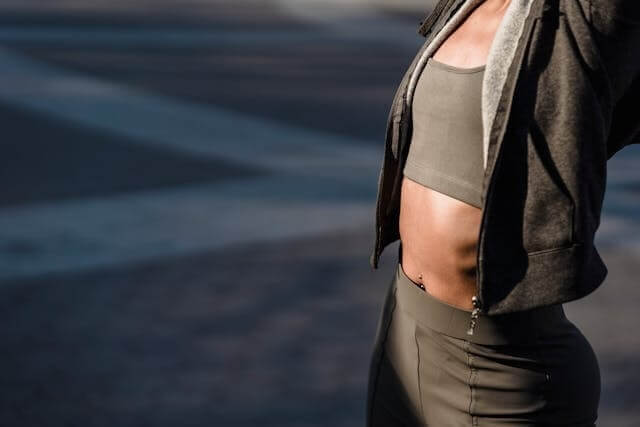
Fitness apparel (athleisure, activewear, shoes) is a broad category that includes yoga pants, leggings, workout tops, sports bras, shorts, and athletic shoes.
It blends fashion with function, with moisture-wicking, compression, and odor-control fabrics being especially sought after. The athleisure market is enormous, expected to reach over $450 billion by 2028, with the U.S. alone accounting for nearly a quarter.
Consumers increasingly want stylish workout wear that transitions into casual outfits, fueling steady demand. Brands, private labels, and niche sportswear stores can all find room in this growing market.
- Why sell it: Huge market driven by the athleisure trend; styles change often, driving repeat purchases; caters to both fitness and casual wear; high upsell potential with matching sets or accessories; especially popular among women buyers.
- Earning Potential: Apparel sourcing costs vary widely, leggings may cost $10–15 to source and sell for $30–40, while jackets can source for $20+ and retail at $60–80. Typical margins average 50–65%.
- Key Considerations: Fierce competition from major brands and fast-fashion; sizing and fit issues increase returns; inventory can be complex with many colors and sizes; trends shift quickly, making some stock outdated.
3. Weighing Scales
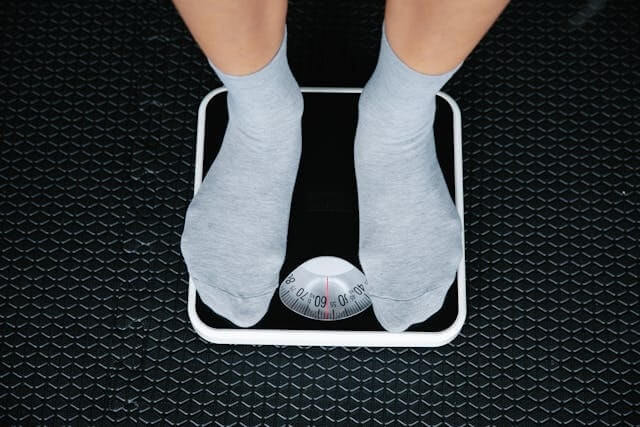
The global weighing scales market is projected to reach over $7.5 billion by 2030, highlighting a significant opportunity. Weighing scales include both standard digital models and smart scales that sync with health apps. Many modern versions track not just weight but also body composition, BMI, and water percentage.
With health awareness rising, scales remain a staple for people tracking fitness progress.
Smart scales are especially popular, aligning with the connected tech and wellness movement. This category is mature but still expanding through smart features and app integrations.
- Why sell it: Consistent, year-round demand (with spikes around New Year’s resolutions); complements weight-loss and home fitness niches; easy add-on for wellness stores; smart versions tap into the smart home and connected device trend.
- Earning Potential: Entry-level digital scales can be sourced for $8–12 and retail at $25–40. Smart scales source for $20–30 and sell for $60–100. Margins typically range from 50–65%.
- Key Considerations: Accuracy and reliability are critical; connectivity and app compatibility may cause complaints; heavier packaging raises shipping costs; the market is competitive with many generic versions available.
4. Exercise Mats
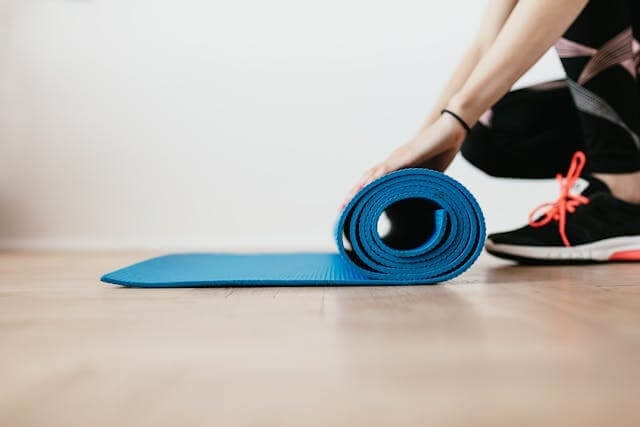
Exercise mats (yoga mats, Pilates mats, etc.) provide cushioning and support for floor workouts. They come in various materials like PVC, rubber, or TPE, and in thicknesses ranging from ¼” to ½” or more.
With more people practicing yoga, Pilates, and floor exercises at home, demand for quality mats is strong. Eco-friendly and textured mats with better grip often attract premium buyers.
Yoga mats saw a major boom during the pandemic and remain a consistent high-demand product.
- Why sell it: Essential for home workouts; lightweight and durable, making them easy to ship; can be bundled with other gear like blocks and straps; customers often buy multiple mats over time.
- Earning Potential: Sourcing around $5–10 for medium-quality mats, retail $20–40. Profit margins typically fall between 60–75%. (Example: $7 cost to $30 sale = ~76% margin.)
- Key Considerations: Many buyers prefer non-toxic or eco-friendly materials; cheap mats wear out quickly and cause complaints; wide variety of sizes and colors can complicate inventory.
5. Yoga Blocks and Rollers
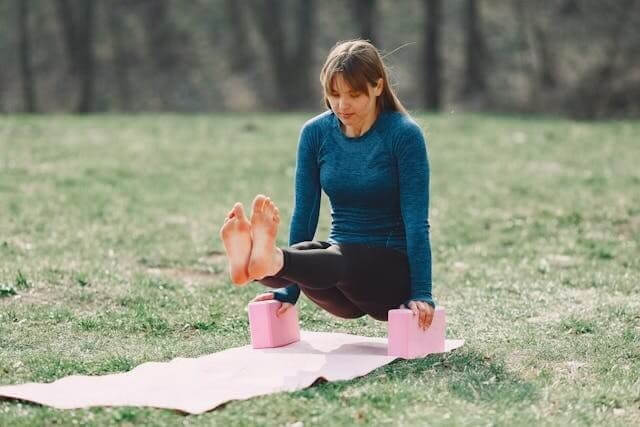
Yoga blocks and foam rollers are essential for yoga and recovery routines. Blocks (usually cork or foam) help practitioners safely modify poses and improve flexibility. Foam rollers are used for self-massage and myofascial release, reducing soreness and aiding recovery.
The market for recovery tools continues to grow as more people prioritize flexibility and injury prevention. These products appeal equally to yoga enthusiasts, athletes, and physiotherapy patients.
- Why sell it: Expands product range for yoga and Pilates niches; highly useful for recovery; affordable add-ons that often boost cart value; used by trainers, gyms, and rehab clinics.
- Earning Potential: Blocks and rollers typically source for $3–8 each and retail at $10–20. Margins average 50–70%. Bundled sets (e.g., 2 blocks plus a strap) can raise order value.
- Key Considerations: Foam rollers come in different densities — beginners may find firm ones too intense; improper use can strain muscles; rollers are bulky and increase shipping costs; low-quality foam may give off odors.
6. Push Up Rack Boards
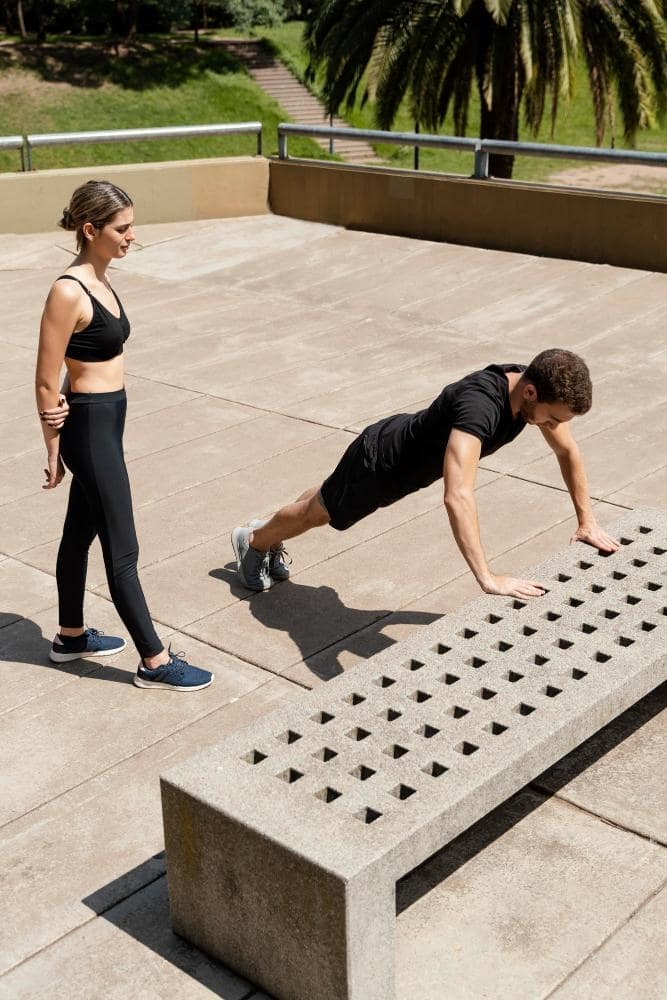
A push-up rack board is a color-coded board with slots for placing handles at different angles. It guides hand placement for push-ups to target specific muscle groups such as chest, shoulders, triceps, and back.
Most designs offer 8–9 positions, making push-ups more versatile and reducing joint strain. These boards are popular among beginners and home trainers who want structured guidance and variety in their workouts.
- Why sell it: Novelty product that upgrades a basic exercise; strong upsell with mats or resistance bands; compact, portable, and easy to store; appeals to the growing home workout market.
- Earning Potential: Typically sourced at $8–15 and sold for $30–50. Profit margins range between 50–70%. (Example: $12 cost to $40 sale = ~70% margin.)
- Key Considerations: Plastic boards can crack under heavy use; handles must be durable and non-slip; oversized packaging increases shipping cost; appeals to a niche audience rather than everyone.
7. Smartwatches
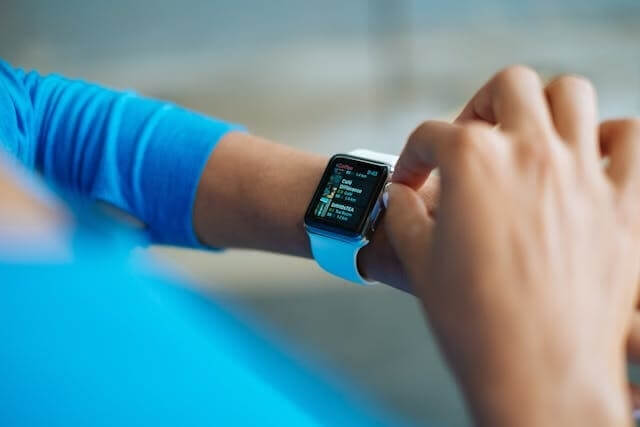
Fitness-oriented smartwatches and activity trackers are among the fastest-growing fitness products. They track steps, heart rate, sleep, calories burned, and sometimes advanced metrics like ECG or SpO2.
Many models sync with smartphone apps to create a complete health-tracking ecosystem. Budget-friendly models under $100 are increasingly popular alongside premium options.
This category is attractive because it blends fitness with everyday wearable tech, making it appealing to a broad consumer base.
- Why sell it: Explosive growth in wearables; high perceived value and multiple price tiers; consumers often replace or upgrade devices annually; aligns with the “quantified self” trend in fitness.
- Earning Potential: Supplier prices range from $15–50, with retail between $50–150. Margins typically fall around 50–70%. (Example: $25 cost to $80 sale = ~69% margin.)
- Key Considerations: Competition is fierce with major brands dominating; battery life and build quality vary across suppliers; compatibility issues can frustrate buyers; legal risks if selling clone models.
8. Pull-Up Bar
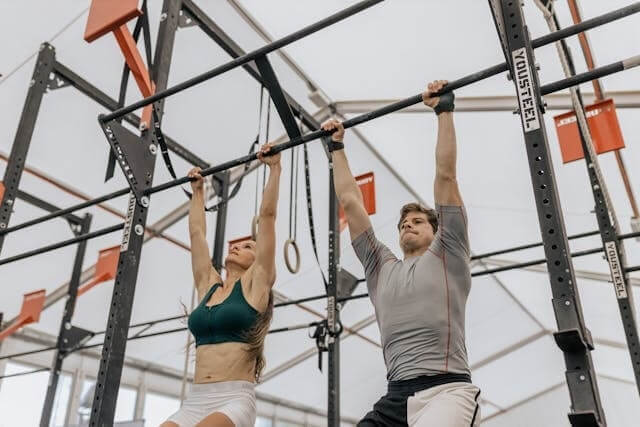
Pull-up bars are simple but highly effective tools for upper-body strength. They can be mounted in doorways, on walls, or even purchased as freestanding rigs. They allow pull-ups, chin-ups, and hanging leg raises without requiring a full gym setup. Affordable and space-saving, they remain a staple for home workout enthusiasts.
- Why sell it: Timeless exercise tool with strong demand; inexpensive and easy to source; appeals to both men and women training at home; pairs well with bands for assisted pull-ups.
- Earning Potential: Doorway bars can be sourced for $10–15 and retail for $25–40. Wall-mounted models cost a bit more but sell for $50 or higher. Profit margins average 50–60%.
- Key Considerations: Safety is crucial, weak bars can cause injury; installation requirements vary by customer; heavier models raise shipping costs; quality assurance is key for repeat business.
9. Ab Wheels
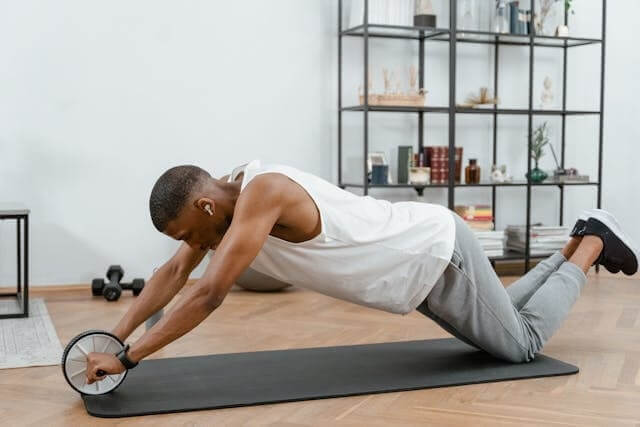
An ab wheel (roller) is a small device with handles attached to a wheel that users roll forward and back on the floor. It primarily targets core muscles but also engages shoulders, lats, and arms.
Ab wheels are lightweight, inexpensive, and highly effective for both beginners and advanced athletes. Their simplicity makes them a popular choice for home gyms and rehab exercises alike.
- Why sell it: Widely popular core training tool; portable and affordable; appeals to beginners and advanced users alike; often showcased by fitness influencers.
- Earning Potential: Typically sourced for $3–5 and retailing at $15–25. Margins are strong at around 50–70%. (Example: $4 cost to $16 sale = 75% margin.)
- Key Considerations: Incorrect use can strain the back; plastic or metal axles must be durable; many cheap generic options on the market; foldable or cushioned-handle models may be better for differentiation.
10. Calf Stretcher Rockers
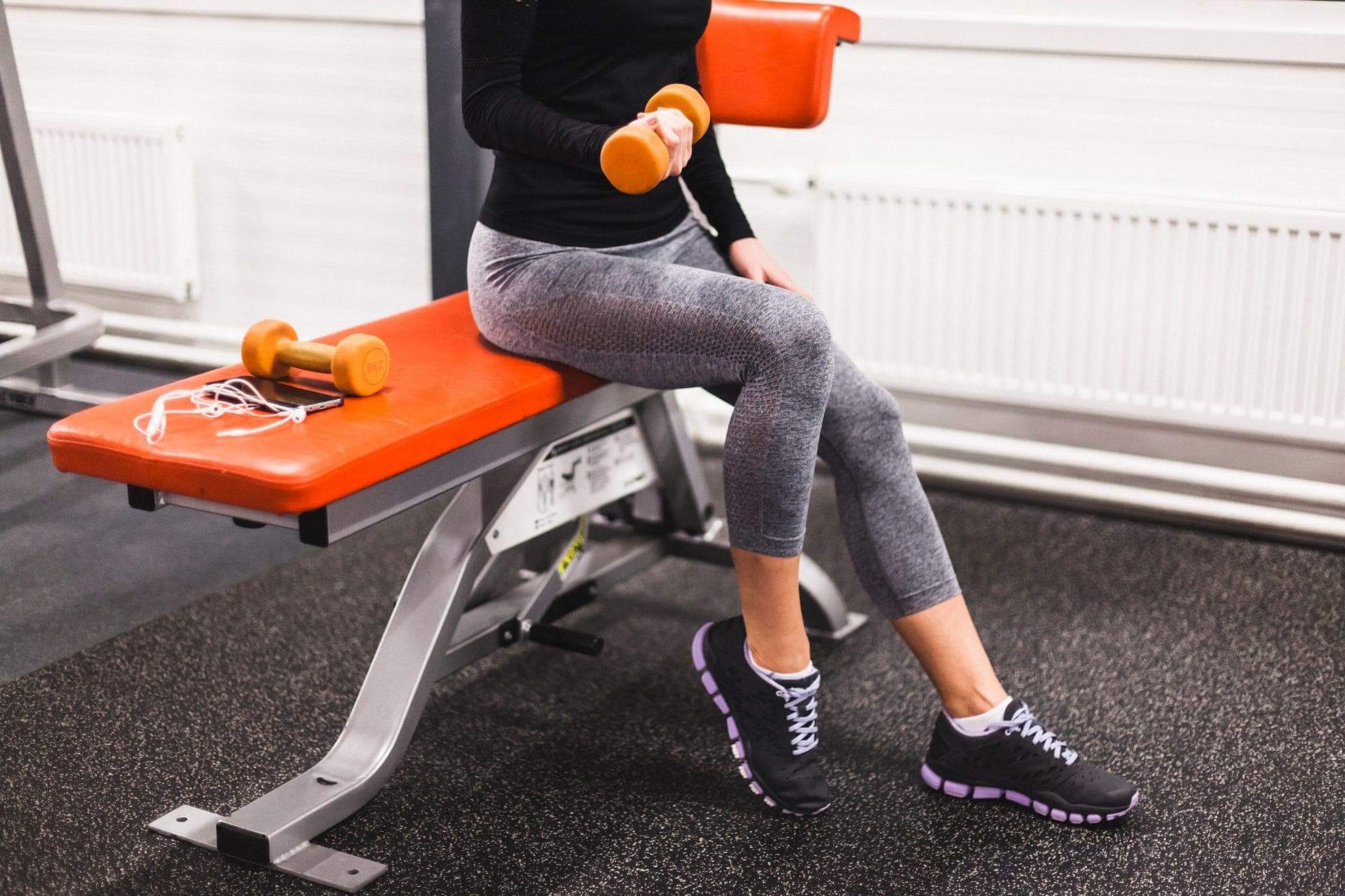
A calf stretcher rocker is a slanted wedge designed to stretch the calves and Achilles tendon. It’s used by athletes, runners, and individuals with plantar fasciitis or tight calves.
By rocking forward on the wedge, users achieve a deeper stretch, which aids flexibility and reduces pain. While it’s a niche product, it’s valued in rehab and athletic communities.
- Why sell it: Serves a specific pain-relief and rehab audience; less competition compared to mainstream items; small and portable; good cross-sell with foot massagers or compression sleeves.
- Earning Potential: Typically sourced at $7–10 and sold for $20–30. Profit margins average 50–60%. (Example: $8 cost to $24 sale = ~66% margin.)
- Key Considerations: Very specialized product, requiring targeted marketing; must be sturdy and non-slip; poor-quality versions break easily; should include usage guidance to avoid accidents.
11. Anti-Slip Yoga Balls
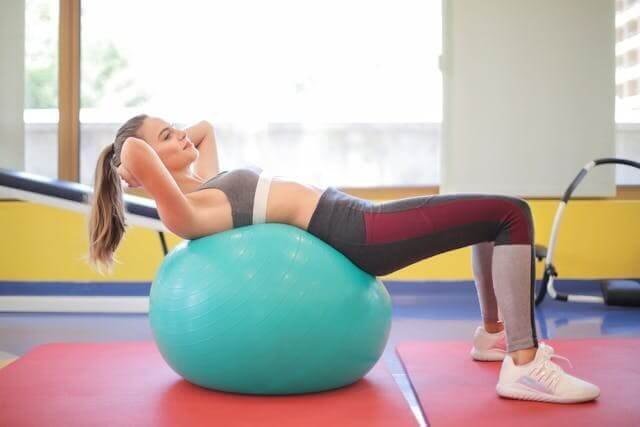
Yoga balls (also known as stability or Swiss balls) are inflatable spheres used in core workouts, yoga, Pilates, physical therapy, and even as office chairs. Their anti-slip textured surface improves safety and grip during use.
They’re excellent for improving balance, posture, and core strength, and their multi-purpose appeal has kept them popular well beyond the yoga community.
Why sell it: Broad use across fitness, therapy, and workplace wellness; multiple sizes (55–85 cm) create SKU variety; lightweight when deflated, making shipping cheap; appeals to a wide customer base.
Earning Potential: Typically sourced for $10–15 and retail at $30–50. Margins average 60–70%. (Example: $12 cost to $36 sale = ~67% margin.)
Key Considerations: Must have high burst strength and weight limits; always include a pump; color and design variety may be expected; poor PVC quality can lead to punctures and returns.
12. Adjustable Dumbbells
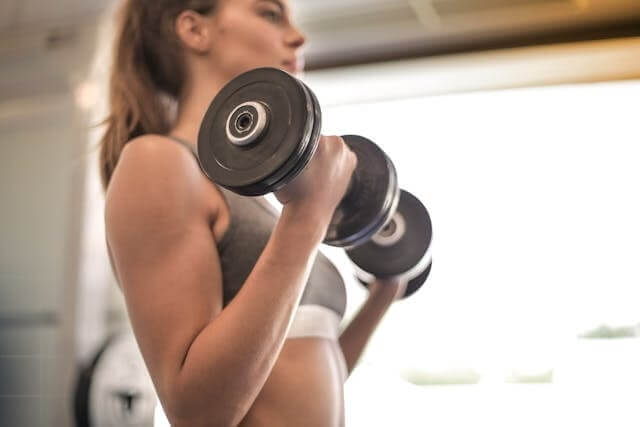
Adjustable dumbbells are space-saving weight sets that allow users to change resistance levels by adding/removing plates or using a dial mechanism.
They replace the need for multiple dumbbell pairs, making them ideal for home gyms where space is limited.
Popular brands like Bowflex have proven how well these products resonate with serious home trainers. Strength training remains a core fitness trend, and adjustable dumbbells are a high-ticket item with lasting appeal.
- Why sell it: High perceived value with a single product covering multiple weights; appeals to home athletes looking to save space; fits perfectly into the home fitness craze.
- Earning Potential: Basic sets source for ~$100–150 and retail for $250–400, yielding 50–60% margins. Example: $120 cost to $300 sale = ~60%. Premium models carry higher ticket prices but often tighter margins.
- Key Considerations: Heavy and bulky, which makes shipping costly and prone to damage; mechanical locking systems can fail; customer service issues (missing plates, defects) may occur; steep competition from specialty brands; warranty handling is often expected.
13. Vitamins and Supplements
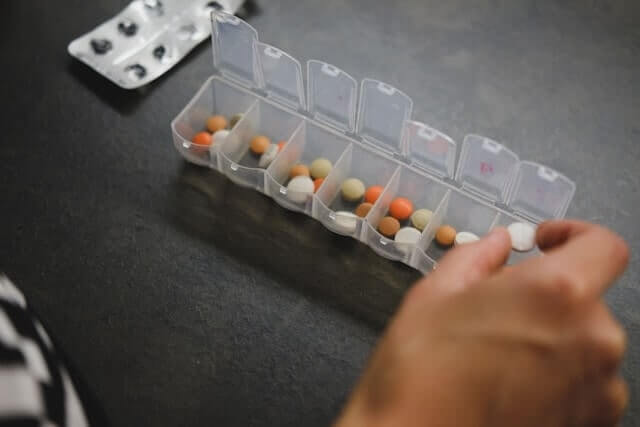
This category includes protein powders, vitamins, amino acids, and herbal blends. With consumers increasingly focused on fitness, immune support, and overall wellness, supplements are in strong demand.
Popular options include whey protein, BCAAs, creatine, pre-workouts, and plant-based powders. The global supplements market is massive and projected to grow significantly through the next decade, making it a lucrative niche for repeat sales.
- Why sell it: Large and growing market; consumable products drive repeat purchases; natural cross-sell with fitness gear; highly popular among gym-goers and wellness buyers.
- Earning Potential: Generic multivitamins can source for $5–10 and sell for $15–30 (50–70% margins). Specialized blends source at $10–20 and sell for $30–60. Premium branding or compliance can command even higher prices.
- Key Considerations: Heavily regulated category; strict labeling and dosage rules; liability risk if claims are misleading; customers strongly prefer trusted brands; expiration and storage conditions must be managed; intense competition from established names.
14. Bike Pedal Exercisers
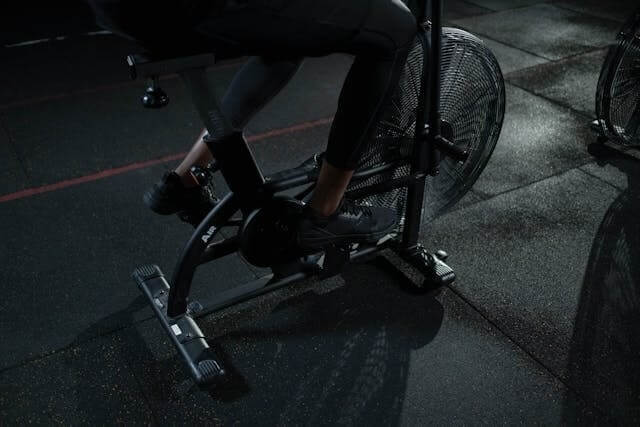
Bike pedal exercisers are compact mini-cycles that can be placed on the floor for leg workouts or on a table for arm training. They offer light cardio, improve circulation, and help with rehabilitation.
Seniors, office workers, and patients in physical therapy use them to stay active without needing a full-size exercise bike.
Their convenience and versatility make them popular for both home gyms and workplace wellness setups.
- Why sell it: Targets a niche market of seniors, rehab patients, and desk-job workers; moderate competition compared to mainstream gear; small footprint appeals to space-conscious users.
- Earning Potential: Source for $15–25, retail for $50–80, with margins of 50–70%. Deluxe models with monitors or sturdier frames can sell higher.
- Key Considerations: Heavier than smaller gear, leading to higher shipping costs; moving parts can wear down; assembly required, so clear instructions are essential; competes with under-desk bikes and full-sized stationary bikes.
15. Insulated Water Bottle

Insulated water bottles, often made of stainless steel, keep drinks hot or cold for extended periods. They’ve become a staple for gym-goers, hikers, and anyone wanting eco-friendly hydration solutions.
Customization (logos, colors, branding) is a big driver of their popularity, alongside the growing push to reduce single-use plastics. This is a practical, everyday item that also fits seamlessly into fitness and lifestyle niches.
- Why sell it: High utility and repeat purchase potential; customization offers strong upsell opportunities; lightweight and easy to ship; aligns with eco-conscious consumer trends.
- Earning Potential: Quality bottles source at $5–8 and retail at $15–25, giving 50–70% margins. Example: $6 cost to $18 sale = ~67%. Branded or customized designs can push higher.
- Key Considerations: Must be BPA-free and leak-proof; cheaper models may fail to insulate properly; heavier than plastic bottles, which adds shipping weight; potential trademark issues if reselling branded versions.
16. Weighted Fitness Hoop
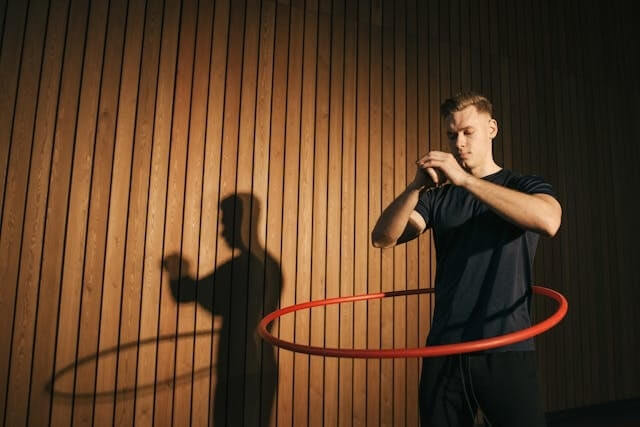
A weighted fitness hoop is a larger, weighted version of the classic hula hoop. It’s twirled around the waist or limbs to burn calories and strengthen the core.
Unlike toy hoops, the added weight provides a more intense workout, and adjustable models with removable segments make them easy to store.
They’ve gained popularity as a fun alternative cardio activity, often shared on social media.
- Why sell it: Viral appeal on social platforms; targets weight loss and toning audiences; inexpensive and easy to ship; can be bundled with mats or instructional content.
- Earning Potential: Source for $10–15, retail for $25–40. Margins average 50–60%. Example: $12 cost to $36 sale = ~67%. Heavier models sell at higher price points.
- Key Considerations: Poor-quality hoops may collapse or cause discomfort; not everyone enjoys hooping, requiring clear marketing; larger users may need size guidance; multi-piece packaging risks damage or lost parts.
17. Hand Grip Strengthener
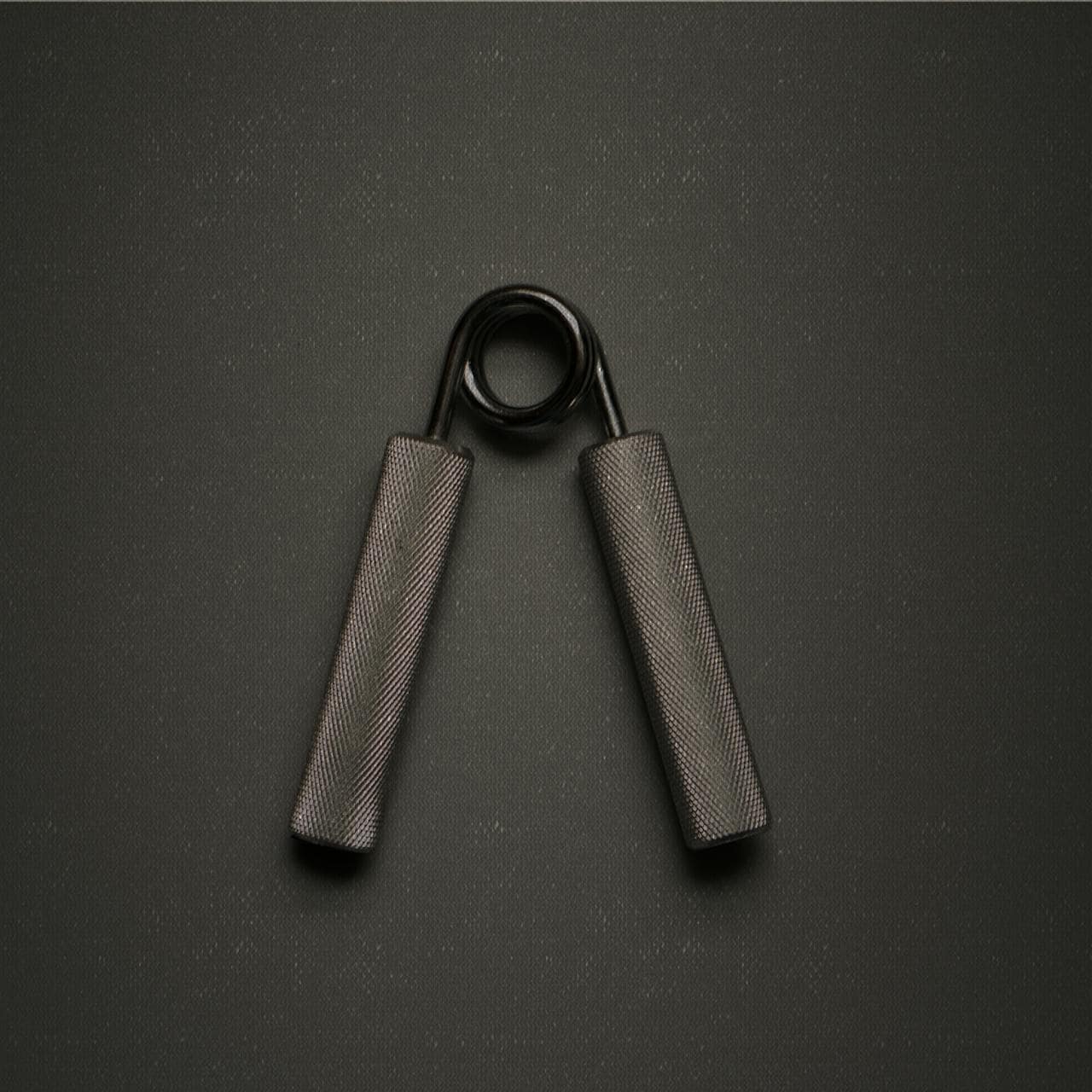
Hand grip strengtheners are spring-loaded or adjustable devices designed to build grip and forearm strength.
They’re used by athletes (climbers, golfers), musicians, and people in rehab to improve hand function and endurance.
Compact, inexpensive, and easy to use, they’re also a common impulse-buy item.
- Why sell it: Very low sourcing cost with broad appeal; suitable for athletes, hobbyists, and rehab; lightweight, portable, and easy to ship; can be sold individually or in sets.
- Earning Potential: Basic models source at $1–3 and sell for $8–15 (60–80% margins). Adjustable or digital-counter versions can source at $5 and retail at $20.
- Key Considerations: Market is saturated with knock-offs; spring or handle quality varies widely; customers may expect ergonomic designs; very small items can be easily misplaced or lost.
18. Jump Rope
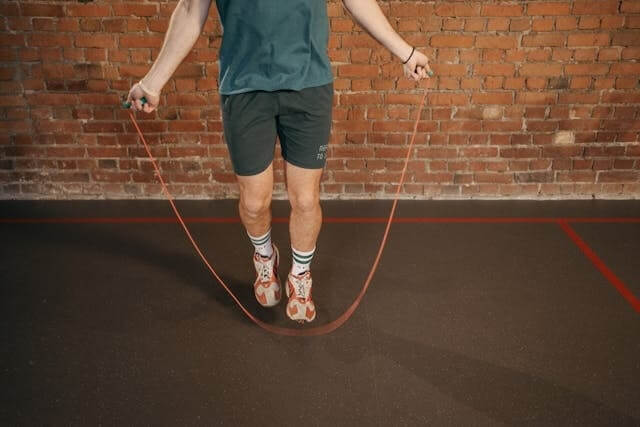
Jump ropes are classic tools for cardio training. Options range from basic PVC ropes to advanced speed ropes with ball bearings and weighted handles.
They’re widely used in boxing, HIIT workouts, and general fitness for calorie burning and coordination.
Because they’re cheap, durable, and portable, they remain one of the most accessible pieces of workout gear.
Why sell it: Universal appeal across all ages; very inexpensive and lightweight; popular upsell alongside other gear; ropes wear out, encouraging repeat purchases.
Earning Potential: Sourcing costs are typically $2–5, with retail prices at $10–15. Margins range from 50–70%. Digital smart ropes can source at $10–15 and retail for $25–40.
Key Considerations: Low absolute profit per item, best sold in volume or bundles; quality issues (fraying ropes or weak handles) can lead to complaints; requires careful packaging to prevent tangling; adjustable or weighted versions can stand out in a crowded market.
19. Agility Ladder Trainer
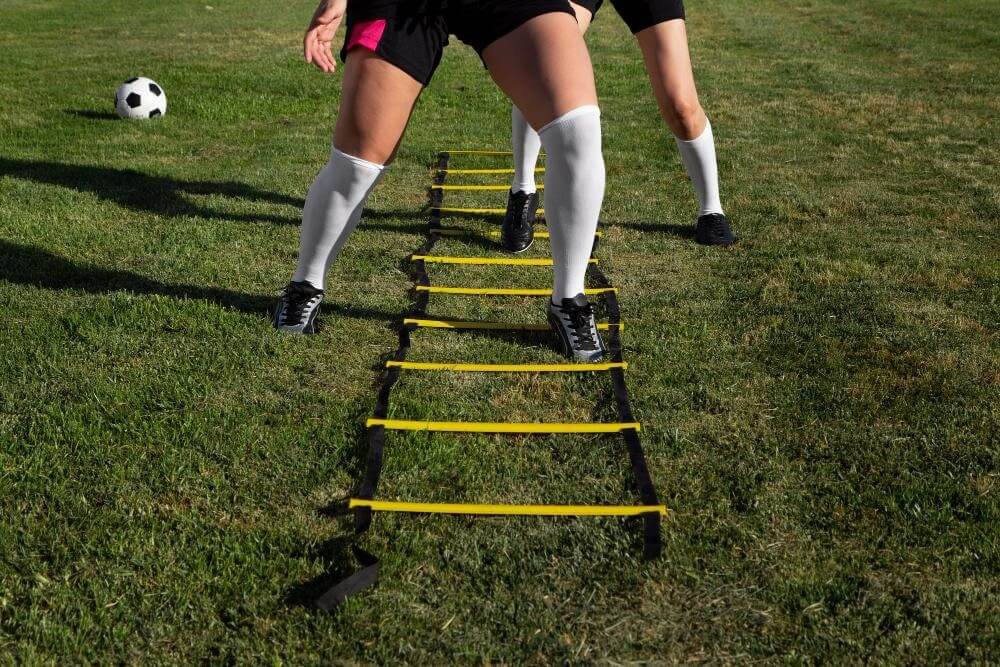
An agility ladder is a ground-based training tool used for speed, footwork, and coordination drills.
Athletes, coaches, and gyms use them for conditioning across sports like soccer, football, and basketball.
They’re simple, durable, and lightweight, making them an affordable yet effective training accessory.
- Why sell it: Steady demand in sports training niches; inexpensive to produce and ship; commonly paired with cones or hurdles; appeals to both gyms and individual athletes.
- Earning Potential: Source for $3–5, retail for $10–20. Margins typically fall around 60–70%. Example: $4 cost to $12 sale = ~67%.
- Key Considerations: Profit per item is low, so sales rely on volume; flimsy ladders break easily — quality control is key; limited mainstream appeal beyond athletic niches; longer versions mean larger packaging.
20. Training Bags
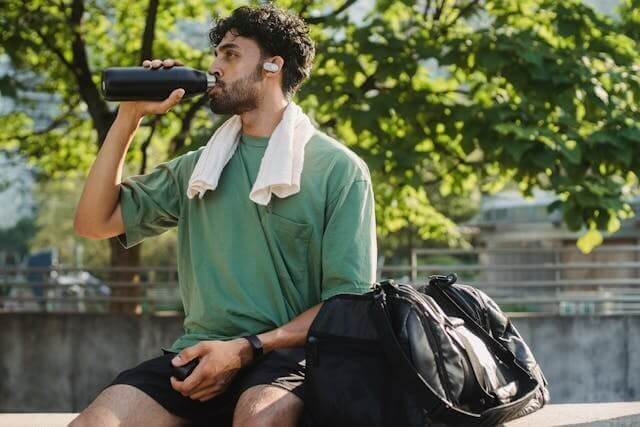
Training bags can refer to weighted sandbags for functional training or durable gym bags for carrying equipment. Sandbags are often used in strength circuits, carried, dragged, or lifted, to build stability and power.
Adjustable fill-weight models allow athletes to tailor resistance, while gym duffels or backpacks serve the everyday transport niche. Both types support fitness routines by providing utility and variety.
- Why sell it: Bridges functional training and lifestyle needs; versatile across workout styles; appeals to “tactical” fitness and CrossFit audiences; heavy-duty products command premium pricing.
- Earning Potential: Adjustable sandbags typically source for $20–30 and sell for $60–100 (50–70% margin). Gym duffels source for $10–15 and retail at $25–40 (60–70% margin).
- Key Considerations: Weighted versions are heavy and costly to ship; durability is critical (tear-resistant fabric, reinforced stitching); wide variety of styles can complicate inventory; customer education may be needed for sandbag use and filling.
21. Massage Guns
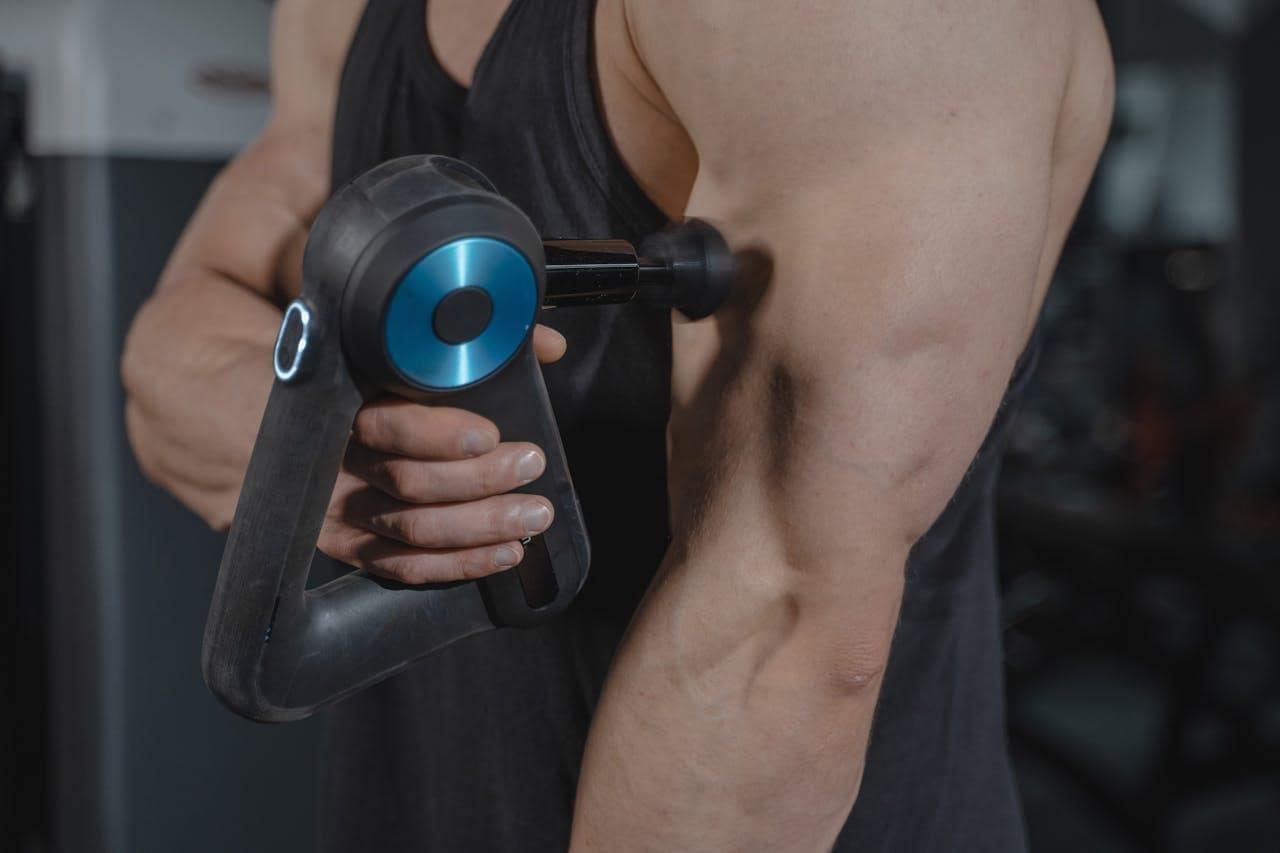
Massage guns are handheld devices that deliver percussive therapy to muscles, aiding recovery and reducing soreness.
Popular among athletes and recreational users, they replicate deep-tissue massage by improving circulation and breaking down muscle tension.
The market has exploded in recent years, with both high-end brands and affordable alternatives available.
- Why sell it: Recovery-focused products are booming; higher ticket value supports strong profit margins; fits into both tech and fitness categories; driven by influencer and social media visibility.
- Earning Potential: Midrange units source for $30–50 and retail at $100–150 (~60–67% margin). Premium models sell for $200+ though margins may tighten. Example: $40 cost to $120 sale = ~67%.
- Key Considerations: Quality varies widely, motors and batteries can fail; proper usage instructions are essential to avoid overuse injuries; market is crowded with budget suppliers; shipping weight is heavier than small accessories.
22. Balance Trainer (Half-Ball)
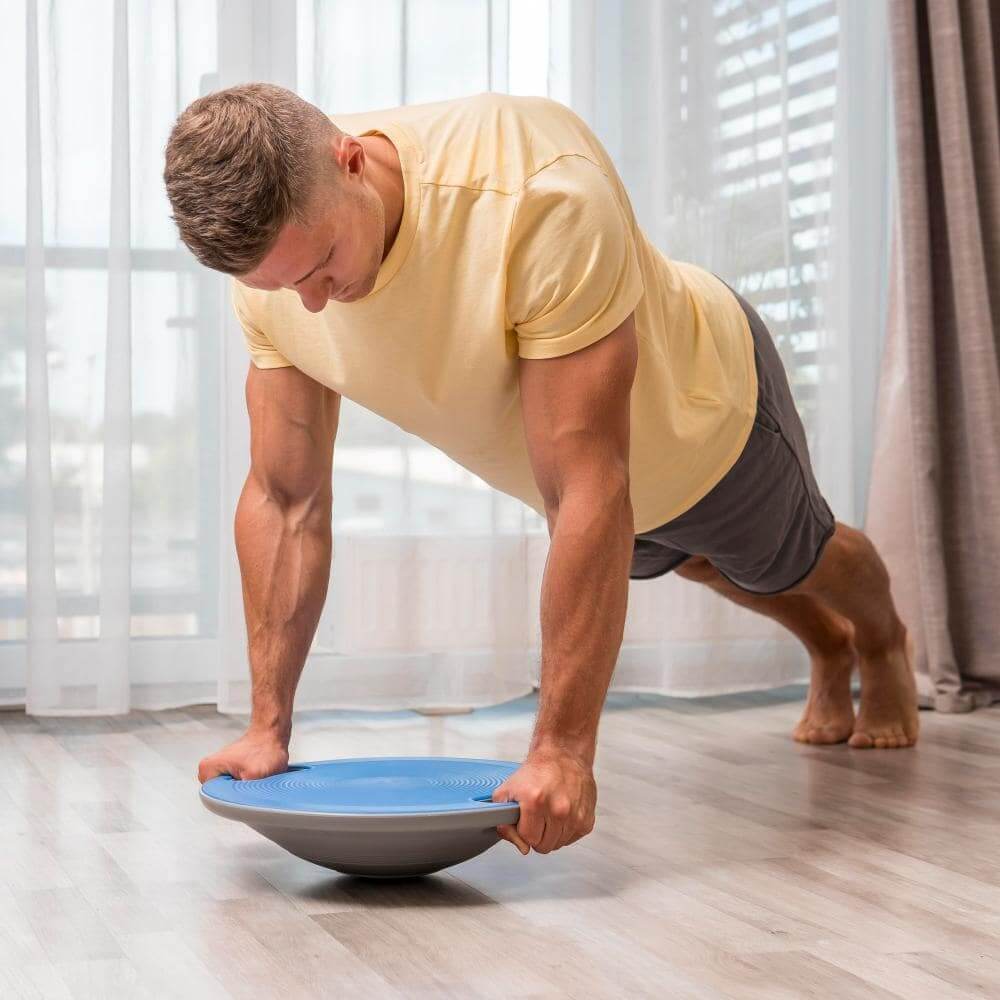
A balance trainer is a half-ball dome with one flat side, often known as a BOSU ball. It’s used for balance, stability, and core exercises, as well as for rehab and athletic training.
By standing, kneeling, or performing strength moves on it, users engage stabilizer muscles and improve posture. It’s a versatile tool that’s become increasingly common in home gyms and physical therapy clinics.
- Why sell it: Multi-purpose use across yoga, strength training, and rehab; trendy in home gyms; easy upsell with mats and resistance bands; premium look and feel at mid-range pricing.
- Earning Potential: Typically sourced for $10–15 and sold at $30–50. Margins run 50–70%. Example: $12 cost to $36 sale = ~66%.
- Key Considerations: Bulky and requires careful packaging; cheaper versions can deflate or leak; must include a pump; weight limits should be clearly stated for safety.
23. Weighted Vest
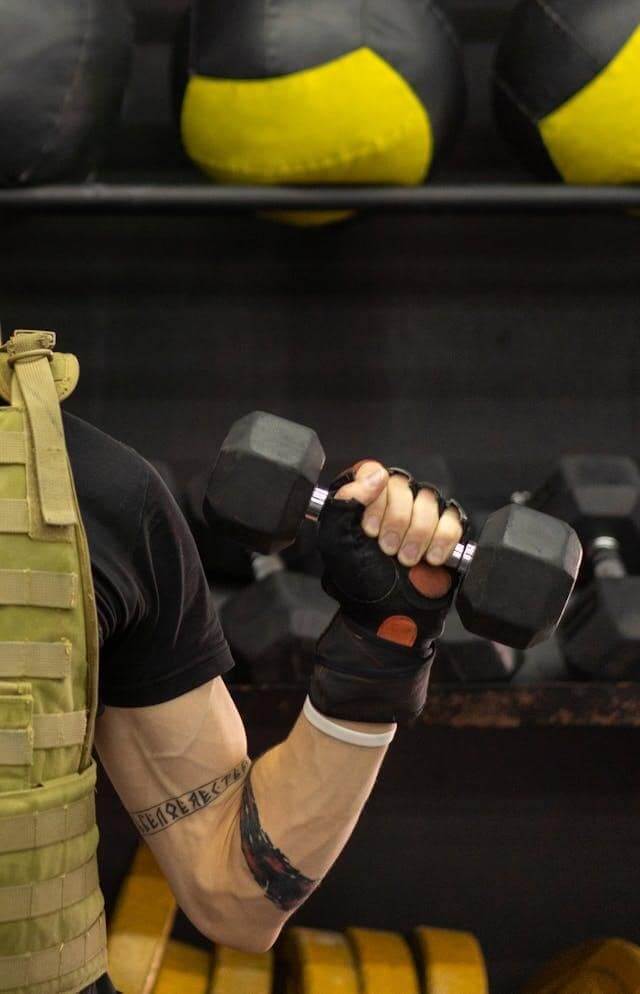
Weighted vests are worn to add resistance during exercises like running, walking, or bodyweight training. They increase intensity and calorie burn without requiring additional equipment.
Adjustable models allow users to scale weight, making them versatile for both beginners and advanced athletes. This category has surged in popularity alongside HIIT and functional training programs.
- Why sell it: Fast-growing trend; appeals to both strength and cardio audiences; offers high perceived value; adjustable options allow for premium upselling.
- Earning Potential: Basic vests source for $20–30 and sell for $60–100 (~60–70% margin). Example: $25 cost to $75 sale = ~67%.
- Key Considerations: Must emphasize safe usage, overloading can cause injury; fit and comfort vary (adjustable straps are key); shipping is heavier and more expensive; returns may rise if vest causes discomfort.
24. Foam Plyometric Box
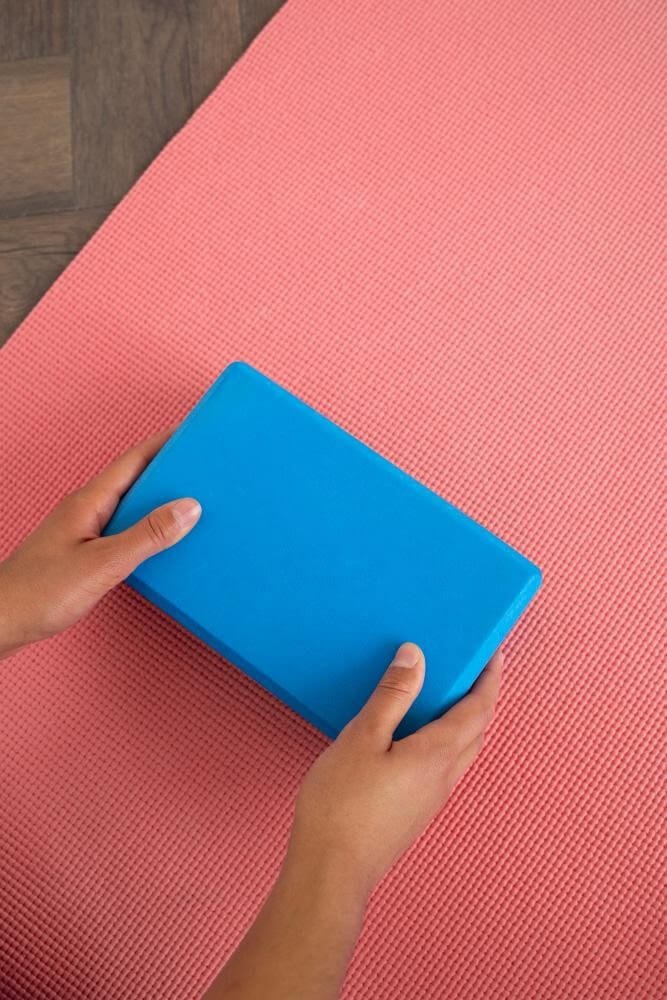
A foam plyometric box is a soft-sided jump box used for plyo training, step-ups, and explosive movements. Unlike wooden or metal boxes, foam versions reduce the risk of injury while still allowing high-intensity workouts.
They’re available in stackable or 3-in-1 designs with different height options. With HIIT and CrossFit remaining popular, these boxes are a go-to for advanced home and gym setups.
- Why sell it: Premium item associated with serious training; safer than wooden alternatives; modular sets can boost cart value; appeals strongly to CrossFit and athletic users.
- Earning Potential: Typically sourced at $30–50 and retail at $100–150 (50–67% margin). Example: $40 cost to $120 sale = ~66%.
- Key Considerations: Large and bulky, high shipping costs; must be durable with high-density foam; non-slip covers are essential; sizing should be accurate to customer expectations.
25. Ankle & Wrist Weights
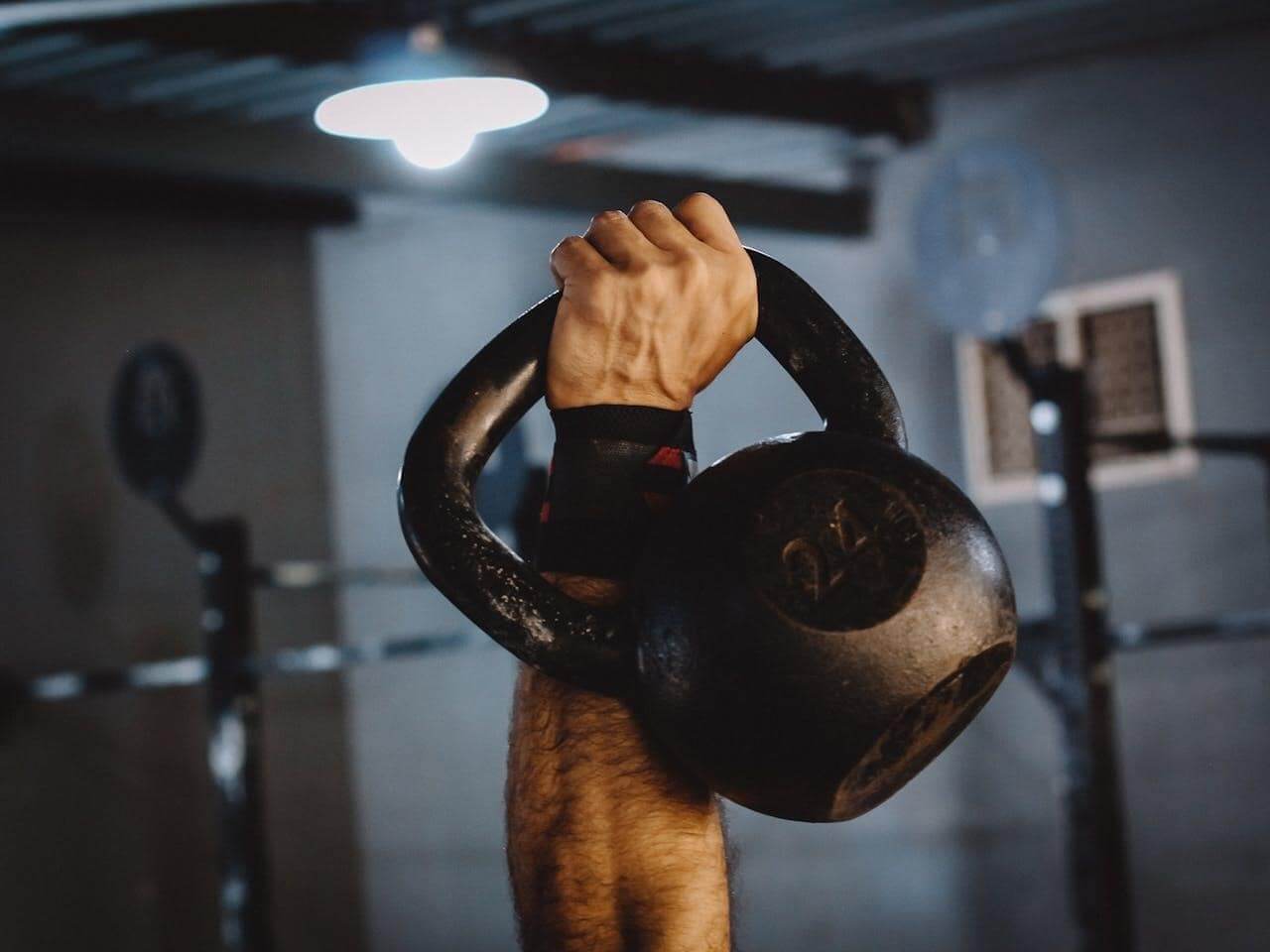
Ankle and wrist weights are small, adjustable straps worn during workouts to add light resistance.
They’re commonly used for walking, aerobics, and toning routines, and have gained renewed popularity through social media trends.
Lightweight and versatile, they’re often sold in sets and make great add-ons to other fitness gear.
- Why sell it: Compact, affordable, and easy to ship; trending via fitness influencers; appeals to both casual exercisers and rehab users; bundling options increase order value.
- Earning Potential: Typically sourced at $3–6 per pair and sold at $10–15 (~55–70% margin). Example: $4 cost to $12 sale = ~66%.
- Key Considerations: Quality of straps and velcro is critical; should include warnings for users with joint issues; low-priced items may get lost or feel “too cheap”; price competition is strong, branding helps differentiate.
Tips for Dropshipping Fitness Products
Selling fitness products online is more than just picking trending items, it’s about making smart choices that keep customers happy and maximize profit. Here are some practical tips to keep in mind when dropshipping fitness products:
- Prioritize Quality Over Quantity: Cheap bands that snap or bottles that leak will kill your brand fast. Always test supplier samples before listing, and choose items with solid durability and positive reviews.
- Focus on Lightweight and Compact Products: Shipping costs can quickly eat into margins. Accessories like resistance bands, jump ropes, and grip strengtheners are inexpensive to ship and rarely get damaged in transit.
- Offer Bundles and Kits: Selling items as bundles (e.g., yoga mat + blocks + strap, or jump rope + gloves) not only raises order value but also makes your store look more professional.
- Differentiate With Branding: Fitness niches are crowded. Customized packaging, logos on bottles, or branded resistance bands can help you stand out and command higher prices.
- Stay on Top of Trends: Fitness is heavily driven by trends (weighted hoops, massage guns, ankle weights going viral on TikTok). Keep updating your catalog so you’re not stuck with yesterday’s fads.
- Provide Clear Instructions and Content: Some products (like ab wheels or massage guns) need guidance for safe use. Add how-to videos or simple usage guides to reduce returns and build trust.
- Target the Right Audience: Segment your marketing, seniors may be more interested in pedal exercisers, while younger audiences go for smartwatches or HIIT gear. Tailoring ads improves conversions.
- Mind the Regulations: If selling supplements or anything that touches health claims, check FDA and FTC guidelines. Avoid overpromising results and make sure labeling is accurate.
FAQs about Dropshipping Fitness Products
Dropshipping fitness products can be a lucrative business. Knowing the profitability, starting steps, and reliable suppliers is crucial.
Is Dropshipping Fitness Products Profitable?
Fitness products are in high demand. The fitness industry has seen continuous growth, especially with home workouts becoming popular.
According to Grand View Research, the global fitness equipment market is expected to reach $14.7 billion by 2028. Categories like yoga accessories and weights are particularly popular, making them a good dropshipping niche.
How to Start a Fitness Dropshipping Business?
Begin by researching the market and selecting your niche within fitness products. Create a business plan outlining your target audience and marketing strategy.
Next, set up your online store on platforms like Shopify or WooCommerce. Use dropshipping apps like Oberlo or Spocket to integrate products. Focus on SEO and social media marketing to drive traffic and sales.
Where to Find Fitness Dropshipping Suppliers?
Reliable suppliers are central to your success. Check platforms like Alibaba and Global Sources for a wide range of fitness products.
Attend industry trade shows to network with potential suppliers. Verify supplier credibility by checking reviews and requesting product samples.
Also, services like Net2Fitness offer competitive pricing on high-quality products, making them a viable option for dropshipping fitness equipment.
Final Thoughts
The fitness industry shows no signs of slowing down, and dropshipping makes it easier than ever to tap into this growing demand. From affordable accessories like resistance bands and jump ropes to trending high-ticket items like massage guns and adjustable dumbbells, there’s a wide range of products to fit different customer needs and budgets.
Success, however, doesn’t come from picking products alone. It comes from pairing the right products with smart execution: choosing reliable suppliers, focusing on quality, building bundles to boost order value, and staying on top of fast-moving fitness trends.
Request a sourcing quote and start exploring the profitable world of fitness product dropshipping today with NicheDropshipping.
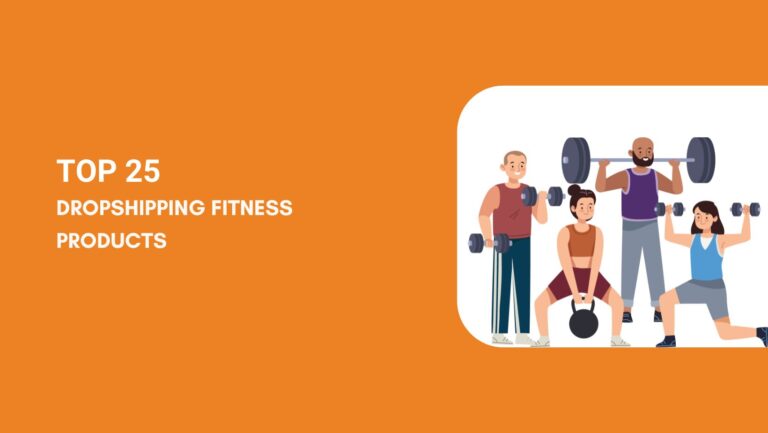

How do I connect to my suppliers on any product I want to dropshipp to my online store and what products are best for dropshipping with their prices and.
Hi, thank you for your comment. Maybe you can contact us for a free quote. Nichedropshipping is willing to help you connect with those reliable suppliers.